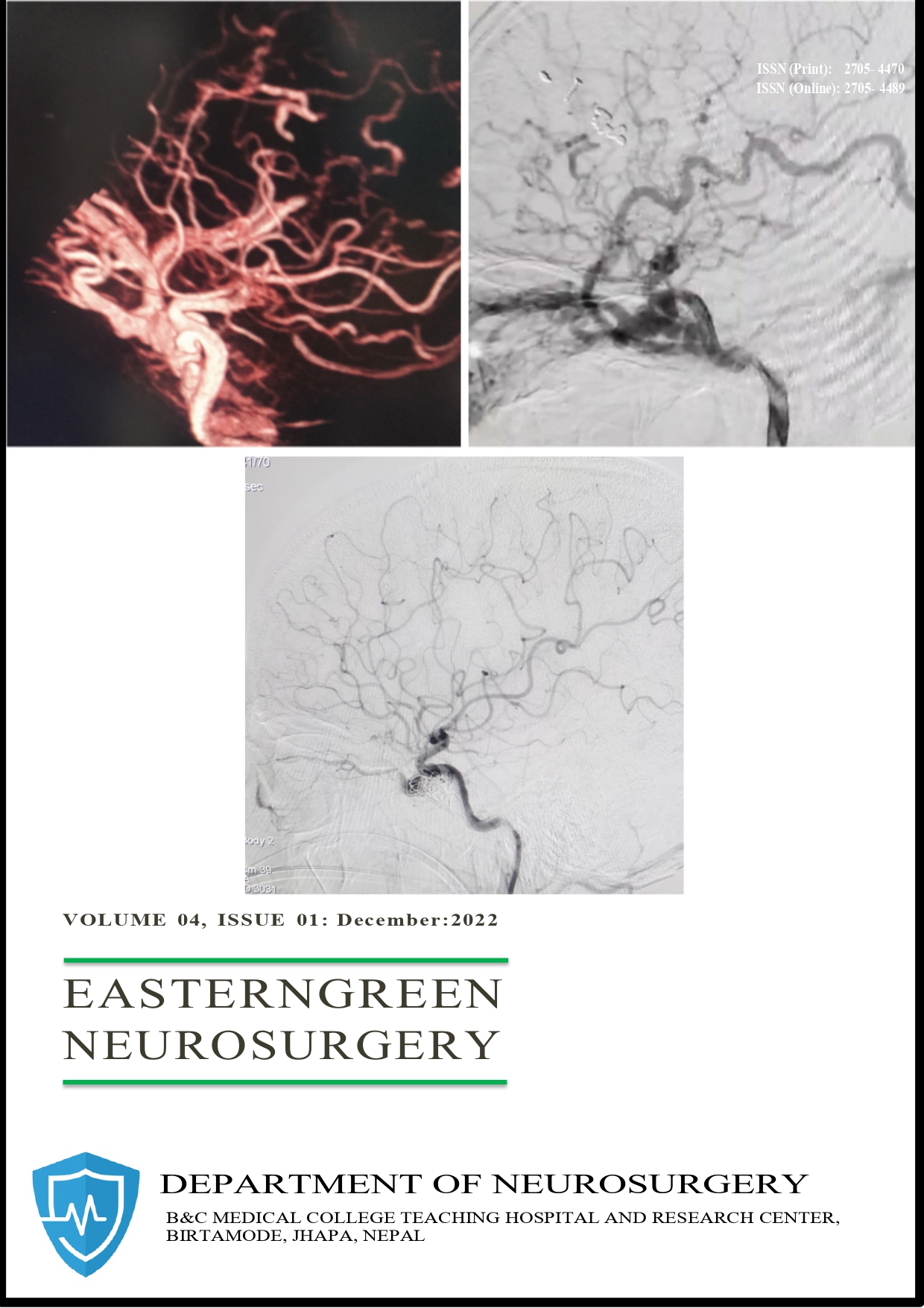Bovine Arch Variation Detected During Cerebral Digital Subtraction Angiography in Nepalese Population: A Retrospective Study
DOI:
https://doi.org/10.3126/egn.v4i1.51006Abstract
Background:Anatomical variation of aortic arch play’s significant role in diagnosing and planning further therapeutic intervention of cerebrovascular diseases. Objectives: Aim of this study was to review the neck vessels arising from the aorta and to determine the prevalence of aortic arch variation in digital subtraction angiography.
Materials and methods: after ethical clearance from institutional review board, study was conducted retrospectively in 129 patients who underwent digital subtraction angiography for various reasons from December 2020 to December 2021. Age ranged between 21-87 years old. 88 were males and 41 were females. Mean age was 57.89.
Results: bovine arch variations were found in 2.3% in our study population. Classic branching pattern was demonstrated in 97 % of studied cases.
Conclusion: Determining bovine arch variation though rarely detected, is essential for diagnostic and therapeutic intervention of cerebrovascular conditions for uncomplicated navigation of catheters and guide wires.
Downloads
Downloads
Published
How to Cite
Issue
Section
License
Copyright (c) 2022 Karuna Tamrakar Karki

This work is licensed under a Creative Commons Attribution 4.0 International License.




